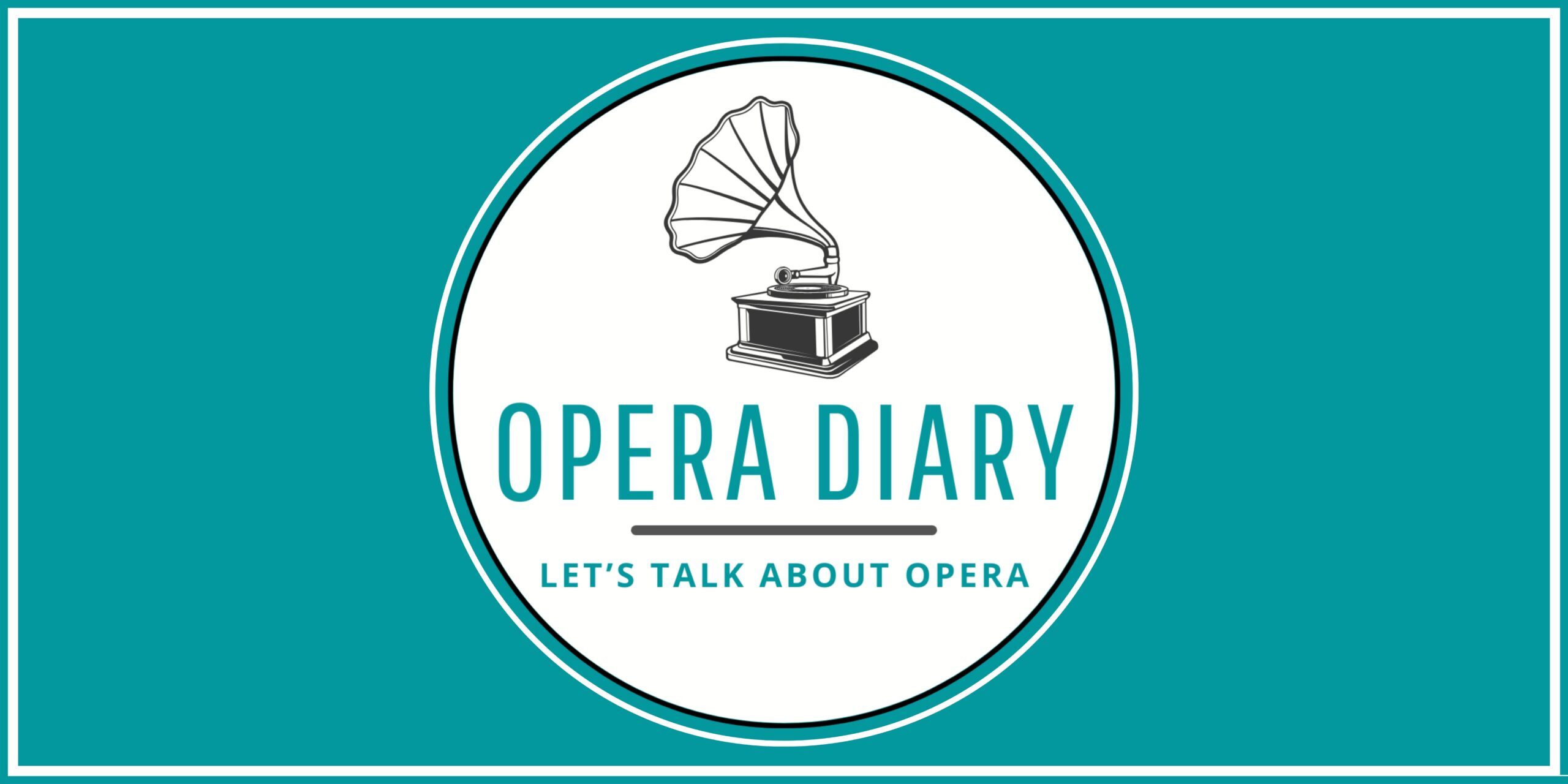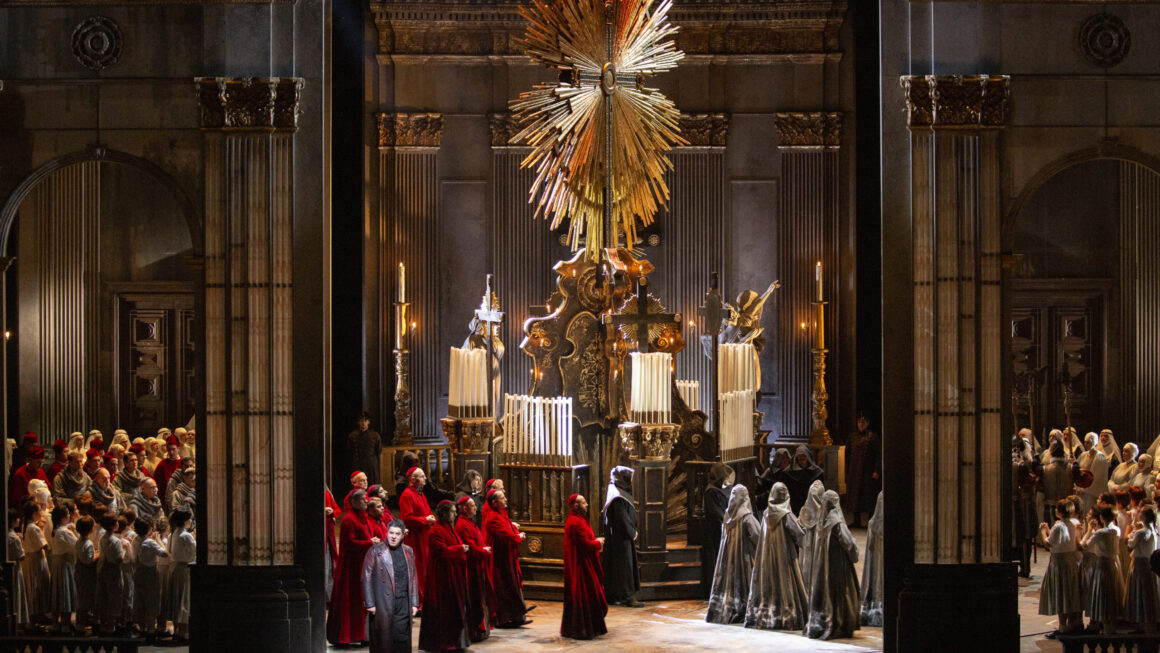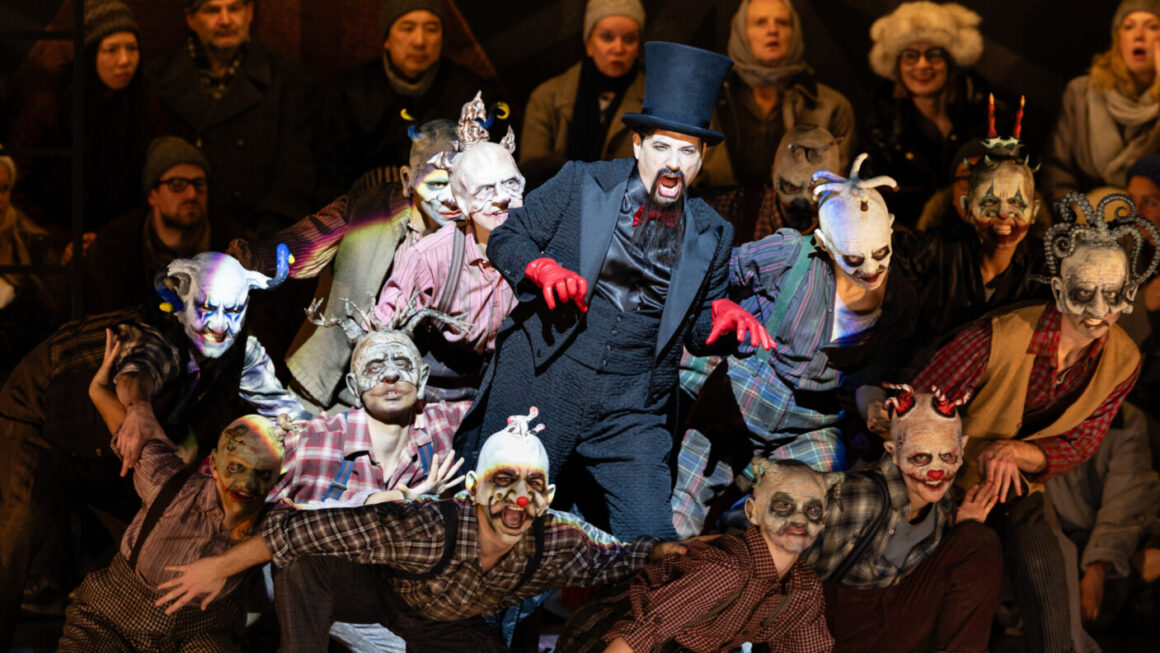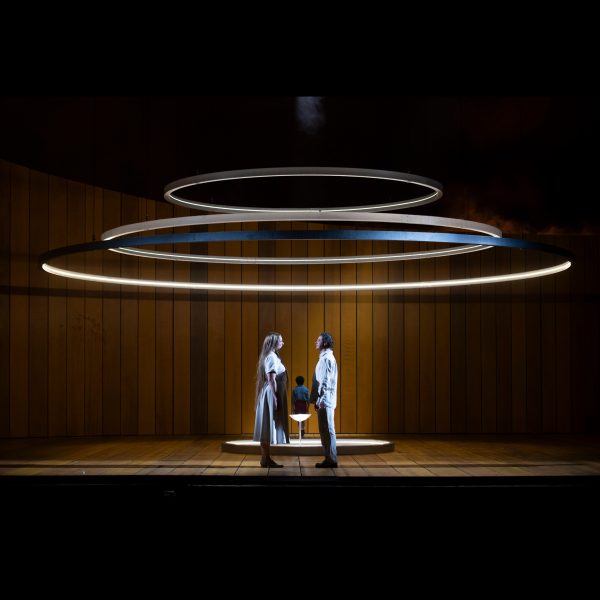There are certain operas that become personal milestones—those you experience over and over again, yet they never lose their power. Tosca is that opera for me. It was one of my first overwhelming emotional moments in the theater, and I’m certain it’s the opera I’ve seen the most in different houses, with different casts, in different productions. But there’s one Tosca that will always stand above the rest: Tosca at La Scala in 2019.
That performance was unforgettable. It was my first time attending La Scala’s legendary season-opening night on December 7, an evening so prestigious in Italy that it’s almost a national event. My first time hearing Anna Netrebko in this role. My first time being so moved that I teared up before she had even sung a note. It was one of those moments that reminds you why you love opera in the first place.
I don’t usually return to the same production in the same theater—but fate had other plans this time. I had already planned to be in Milan for the city’s half-marathon on Sunday, March 23, when I noticed Tosca was being performed the night before. Without hesitation, I booked a hotel, even though I had no ticket yet. And if you’ve ever tried to buy a last-minute ticket at La Scala, you know it’s almost as difficult as getting into the Super Bowl.
Somehow, the stars aligned. Less than 24 hours before the performance, I managed to secure a ticket—thanks to an unexpected, chance encounter with someone very important in the opera world. I wasn’t even supposed to be in that part of the city at that moment, but there I was, walking into an opportunity. Maybe Puccini’s spirit was guiding me? Who knows.
La Scala: The cathedral of opera
Walking into Teatro alla Scala is unlike stepping into any other theater. Built in 1778, La Scala has witnessed the births of some of the most significant operas in history. It’s where Verdi’s Otello and Falstaff premiered, where Puccini first presented Madama Butterfly (though its opening night was famously disastrous), and where composers like Rossini and Donizetti cemented their legacies.

Even beyond its musical significance, La Scala is a cultural institution. During World War II, it was heavily damaged by bombings in 1943, but it was rebuilt and reopened in 1946 with a legendary concert conducted by Arturo Toscanini. More recently, it underwent a major renovation in the early 2000s, blending historical grandeur with modern acoustics and stage technology.
And yet, for all its prestige, La Scala remains a place of tradition and expectation. Unlike at other opera houses, Milanese audiences have no hesitation in expressing their opinions—loudly. They can be brutally critical, but when they love something, their ovations can shake the walls. This is opera at its purest, a place where every note, every gesture, and every breath matters.
Tosca: drama, passion, and perfection
And so, on March 23, I found myself once again in this legendary theater, reliving a masterpiece. The same magnificent staging I had seen in 2019. The same Luca Salsi as Scarpia, the same Francesco Meli as Cavaradossi, but this time, with Chiara Isotton as Tosca. A slight change in cast, but with the same raw intensity.
Puccini’s Tosca is a rollercoaster of passion and power, a political thriller wrapped in music so intense it almost feels cinematic. Written in 1900, Puccini took inspiration from Victorien Sardou’s play La Tosca, crafting a story full of love, jealousy, betrayal, and revenge. The opera takes place in just 24 hours, yet it feels like a lifetime unfolds on stage.
It’s an opera where every moment is a turning point—from Tosca’s jealous outburst in Act I, to the chilling “Te Deum” with Scarpia’s sinister plotting, to the heart-wrenching “Vissi d’arte,” and finally, the devastating execution scene. It’s no surprise that Tosca has been a staple at La Scala since its premiere, with the world’s greatest sopranos—Maria Callas, Renata Tebaldi, Leontyne Price, and more—having made their mark in this role on this very stage.
A cast that delivered
Luca Salsi, as Scarpia, was perfect—but that was expected. He owns this role. His Scarpia is not just a villain, but a master manipulator, making his presence on stage truly terrifying. Every look, every movement, every phrase carried weight.

And then there was Francesco Meli. I’ve seen him perform many times before, but his Cavaradossi was even better than I remembered. His “E lucevan le stelle” was simply breathtaking, the kind of performance that reminds you why Puccini’s music hurts so beautifully.
The musical direction was in the hands of Michele Gamba, stepping in where Riccardo Chailly had once led. He conducted with precision and energy, keeping Puccini’s score tense and electrifying—exactly as it should be.
The magic of La Scala
Leaving the theater that night, I was reminded why I limit my visits to one or two trips per year—to keep the magic alive. This year, however, I’ll be back three times: for Tosca, for Norma in June (which I’m especially excited about, featuring Freddie De Tommaso and Marina Rebeka), and in December for the grand opening of the 2025/2026 season, a highly anticipated event with a new artistic direction for La Scala.
But on March 23, Tosca was all that mattered.
A breathtaking production. An electrifying performance. A full house of opera lovers.
This is opera, this is La Scala.




